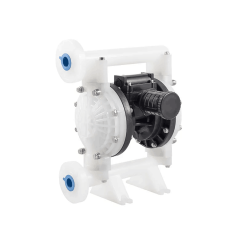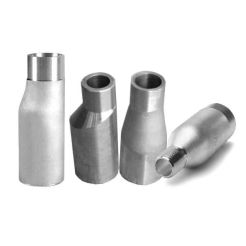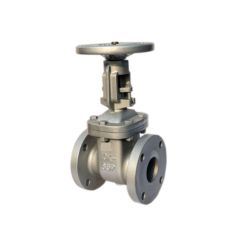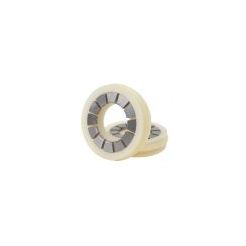Scrap steel cutting machine blade
Cutting blade, with steel inlaid cutting machine blade, all steel cutting machine blade also known as scissors cutting machine blade, long blade, Widely used in the processing of metal sheets in industries such as mechanical equipment, metal products, electrical appliances, and industrial mining. Cutting blade, with steel inlaid cutting machine blade.
Product Description
Scrap steel cutting machine blade, including steel cutting machine blades, all steel cutting machine blades, also known as scissors cutting machine blades, long blades.
Blade materials: H13, LD, SKD-11, D2, Cr12MoV, 6CrW2Si, 9CrSi, T10
Quenching hardening: HRC: 50 ° -63 ° Tolerance: ± 0.002
Scissor specifications: Standard shearing machine blades are available in stock, while non-standard shearing machines can be customized, processed, and produced according to customer drawings.
Other services: Grinding, repairing, and repairing the cutting blades of the shearing machine
Scissor blades are suitable for various types of special-shaped metal shearing machines, bar shearing machines, plate shearing machines, and other shearing machines.
Our products include hydraulic shearing machines, metal bar shearing machine blades, special-shaped plate shearing machine blades, high-precision CNC shearing machines, etc
| Product name | Scrap steel cutting machine blade, gantry cutting blade, scrap steel cutting machine blade, hydraulic cutting machine blade, crocodile cutting machine blade |
| Material used | 1.2344 , 1.2767 , 1.2080 , T10、9CrSi、55SiCr、6CrW2Si、H13、ally steel etc |
| Application | for cutting scrap metal sheets, metal scraps, metal trashes, construction metals, metal bars etc |
| Application field | Widely used in mechanical equipment, metal products, electrical appliances, industrial and mining industries, etc |
| Product Characteristic | The cutting surface is smooth and free of burrs. Specially designed for the cutting of special steel plates such as stainless steel plates, manganese plates, silicon steel sheets, etc., the cutting surface adopts corresponding different materials to make the cutting more reasonable, the cutting section is flat and smooth, and the blade is sharp and durable. |
Carbon bonded tool steel: Carbon bonded steel generally uses materials such as 65 and 75 steel, T8, T10, etc. The blade heat treatment hardness of this material is within the range of HRC57-59 degrees, suitable for the recycling and shearing of ordinary low-carbon cold-rolled sheets, ordinary A3 sheets, and waste. This feature is low cost and suitable product price.
Low alloy tools: The commonly used materials for the blades of low alloy tool steel include 6CrW2Si, 9CrSi, Cr12MoV, etc. The heat treatment hardness of the blades is within the range of HRC58-62 degrees, specifically for cutting stainless steel, suitable for cutting hot-rolled plates and stainless steel medium thick plates.
Alloy tool steel: The cutting machine materials for alloy tool steel include H13K, H13, etc. The blade of this material is used for hot rolling steel billets, hot shearing medium and thick steel plates, etc. It is characterized by high temperature resistance and is not easy to anneal. It is used for hot rolling and hot shearing processes in steel mills.
The different uses of different blade edges for shearing machine blades
In industrial production, Scrap steel cutting machine bladey is also known as the cutting tool. There are generally two types of commonly used blade edges, one is 90 °, commonly known as "flat edge", and the other is 82 °, commonly known as "oblique edge". So what are the differences in the design of these two types of blade edges? What are the differences in their performance?
The difference between these two types of cutting edges lies in the fact that the 82 ° oblique cutting edge produces a more neat and beautiful edge than the flat cutting edge of the 90 ° cutting edge. It is commonly used for cutting thin plates. Due to the small force area of the oblique cutting edge blade, if used for cutting thick plates, the cutting edge is highly likely to crack, commonly known as "breakage". If customers have high requirements for the cut finished plate, it is recommended to choose a cutting edge with a better oblique cutting edge, which can meet customer requirements and will not cause blade breakage due to plate thickness.
The above is the different performance brought about by the different designs of these two types of blade edges. It is actually quite simple to distinguish whether it is a flat edge or an oblique edge. Use a 90 ° tool ruler to measure the blade edge directly. If it is parallel, it indicates that it is a flat edge blade. If there is a gap (because the degree difference between 82 ° and 90 ° is not easy to measure), then it should be an oblique edge blade.
All mentioned above are the upper blade part of the shearing machine blade, and the lower blade has a 4-sided 90 ° flat edge.
Adjustment of blade clearance for shearing machine
First, adjust the gap between the upper and lower blades to 0.5 millimeters, then use a feeler gauge to calibrate from the beginning, keeping the overall gap of the blades basically consistent, and then return the blade edge to zero gap.
Then detailed adjustments need to be made (careful observation must be made during operation, and there should be no bite on the upper and lower blades). When in the zero position, the feeler gauge can fit three threads but not five threads.
Make appropriate adjustments according to 1/10-1/20 of the required shear sheet metal thickness.
When the cutting edge of the shearing machine is sharp, if there are burrs on the edges of the cut board, the gap between the upper and lower blades can be appropriately reduced.
Safety operating procedures for shearing machines
1: The shearing machine should be used and stored by a dedicated person. The operator must be familiar with the structure and performance of the machine tool.
2: Overloading the use of the shearing machine is strictly prohibited. It is not allowed to cut quenched steel, hard steel, high-speed steel, alloy steel, castings, and non-metallic hard materials.
3. The blade edge of the shearing machine should be kept sharp, and if the blade edge is blunt or damaged, it should be promptly polished or replaced.
4. When operating with multiple people, there should be a dedicated person to command and coordinate.
5. It is prohibited to cut two different specifications of materials simultaneously on the shearing machine, and multiple layers of overlapping cutting are also not allowed.
6. When the shearing machine is feeding materials, it is prohibited to operate with hands between the sheet metal and the countertop. When cutting short materials, another iron plate should be used to press it down, and the fingers should be at least 200 millimeters away from the cutting edge.
7. After aligning the wire with a pry bar, the pry bar should be immediately removed before cutting. If the iron plate moves, a wooden pillow should be used to firmly block it to prevent the pry bar from popping out and injuring people after pressing the foot down.
8. The cut workpiece must be placed steadily and not stacked too high. The leftover materials and waste materials at the edges and corners should be cleaned up in a timely manner to keep the site clean.


Email: lena@industrialblades.cc
Mob.: +86 156 3188 2795
WeChat: +8615003285235
Whatsapp: +8615631882795
Add.: Changzhou New North District Luo Xi Town North West Bridge 22 Shang Zhuang Bridge Soup











